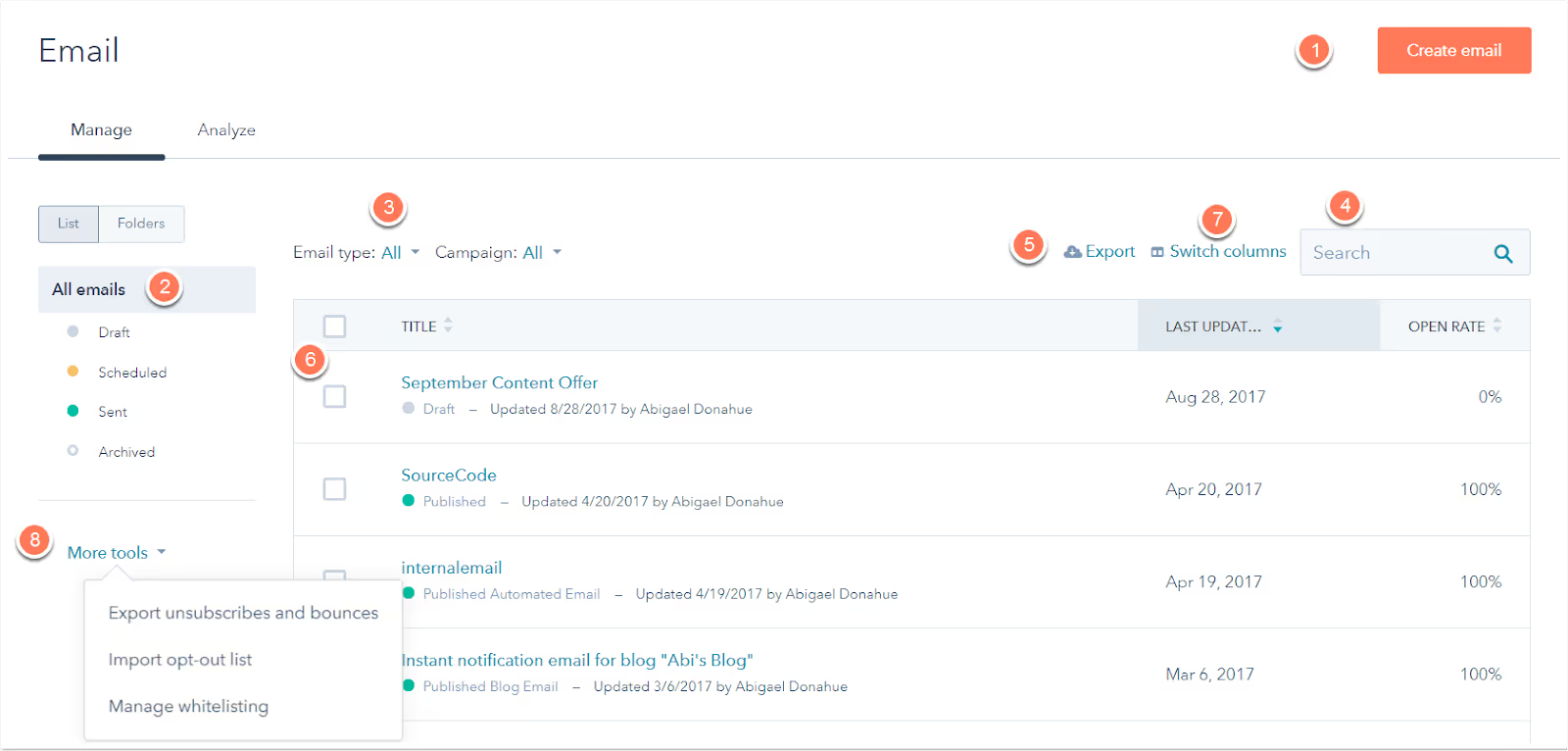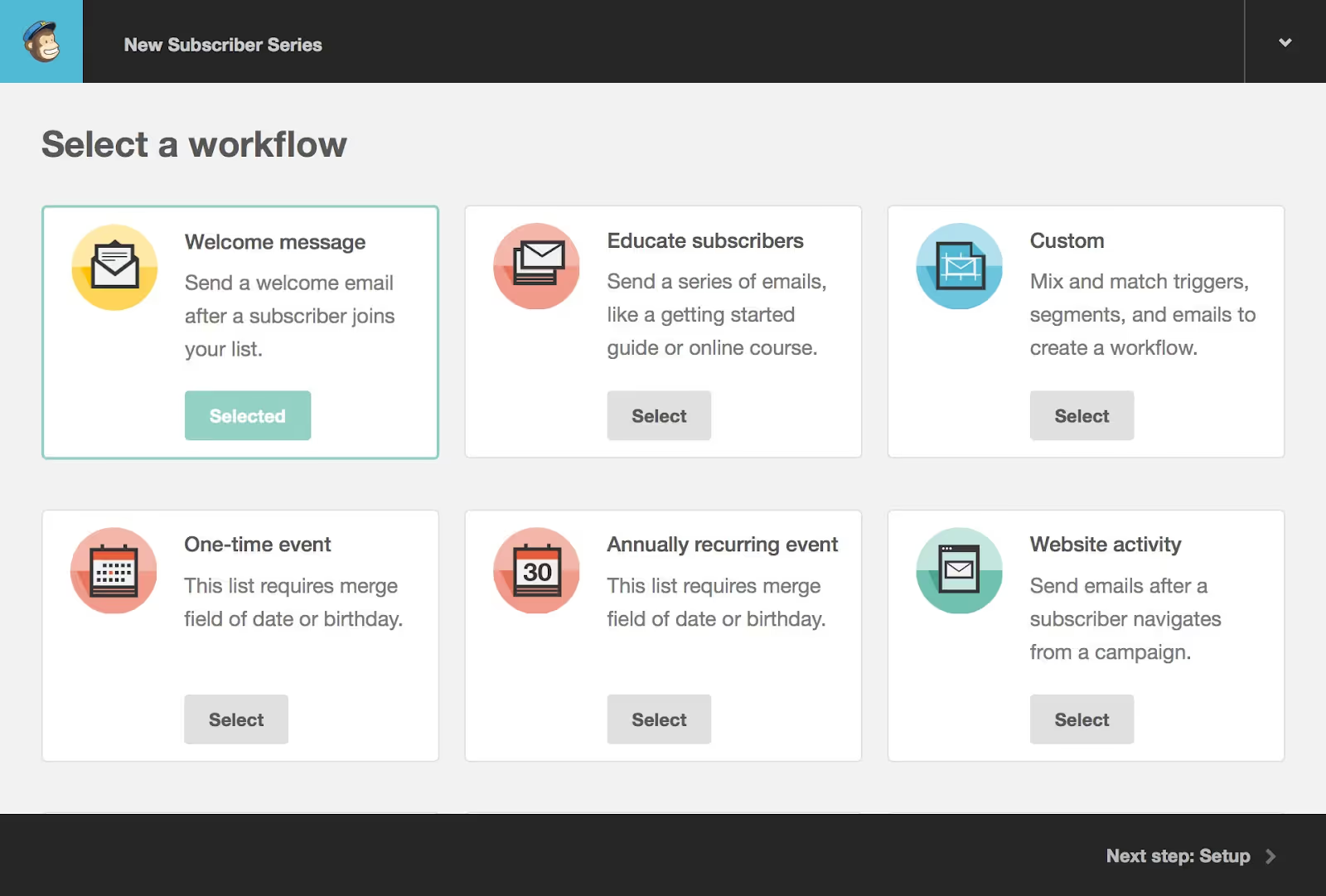What is Email Automation? Effective Workflows and Tools
What is Email Automation? Effective Workflows and Tools

E-commerce marketers always have a lot on their plate. Little wonder why the rush for foolproof marketing strategies is at an all-time high. This article highlights all you need to know about email workflow automation, plus tools to get you started.
Every e-commerce marketer wants to engage customers and nurture leads at scale. In addition, they want to outperform the competition and provide results that exceed quarterly marketing goals.
But guess what? Marketing is hard work! And very few folks are willing to put in the effort for good reasons.
Either way, we can't tell you that you can scale your business at length and compete against the behemoths like Amazon or Best Buy without blood, sweat, and tears.
The advice we bring is simple ”as an e-commerce marketer; you can do more while working less.”
Are you wondering how? Welcome to the world of ”email workflow automation.”
What is email automation?
Email automation is the subtle art of using automated and personalized email campaigns to nurture and engage ideal customers and existing contacts.
Here is the idea. Design a series of emails, set behavioral or database triggers, and automate the sending process with an automation tool.
Still, sounding complex? Read on!
Email automation is a holistic email marketing process that converts leads into customers, improves the accuracy and impact of your overall email strategy, and saves you time.
Email automation revolves around workflows. Workflows are a series of emails with predetermined triggers that prompts the set of actions you want your automation software to take.
For instance, manually engaging in this task can take forever if you've managed to create a large email list and need to send welcome emails.
However, you can create a workflow that streamlines the process with email automation software—automatically sending a series of introductory emails to new subscribers. Email automation frees you of the hassle of dealing with a bulky list while saving time.
How to automate an effective workflow
Before diving into the email workflow building process, know this: your automated email sequence is part of your overall email marketing strategy. You must build your workflow with a holistic mindset if you want results.
Below is a step-by-step guide to success:
1. Select an email automation software
Wondering why we placed the need to select a sustainable email service provider (ESP) as a top priority when creating an effective workflow? Well, it's simple. Your ESP determines the efficiency and speed at which your workflow will function.
Without an ESP that understands the do’s and don'ts of email automation, you'll have a hard time segmenting your list based on behavior, traits, or contact information.
To know the best email automation software for your business, jot down your business goals and compare features of multiple ESPs while having your overall email strategy in mind.
If you're in haste and want to find the best email marketing automation tool for your business, scroll down to the next section. We detailed our top three picks there.
2. Identify the leads at the receiving end of your email
Who’s at the receiving end of your automated email? Cart abandoners, new customers, existing clients, etc. Identifying the audience you intend to reach with your automated emails is the easiest way to strengthen your message.
Also, for automated emails to work, it's crucial you set the right triggers and segment your customers ahead of the campaign. Successful email workflows revolve around how well you know your audience—identifying your audience will help you design a sustainable lifecycle for your email workflow.
3. Highlight your goals
Email marketing campaigns are only as successful as the strategy behind them. Don’t fall for the false notion that you’re automating a series of emails and might not need an overall strategy.
Highlight your goals. What do you want customers to do; buy from you? Learn about your brand? Or stay loyal to your company?
Knowing your goals helps you talk to your audience instead of speaking at them and also helps your ESP automatically segment your list.
4. Determine the process you wish to automate
Email automation workflow is only making headlines in the email marketing world because they take away the hassle of manual scheduling.
However, the initial process—creation and design—requires lots of manual work. After highlighting your goals, you need to determine the process you wish to automate with your workflow.
For example, let's say you want your workflow to inform people about your brand after crossing a specific threshold. Now, what do you want to automate; is it the sending of the email, the scheduling of the email, the updating, syncing process, email segmentation, and more.
5. Set triggers
As you highlight your goals and determine the process you wish to automate, note points where you need to set behavioral triggers.
For instance, if you’re creating a conversion workflow with eight emails, and leads love the offer from your very first email and convert, you wouldn’t need to send the other seven. That would frustrate an already converted client.
Highlight points where you need to set behavioral triggers telling when the workflow starts and stops. You can set triggers based on page views, content downloads, contact properties, social media clicks, and more.
6. Create your assets
It’s time to create and design your email workflow. If you follow the above steps, this should be a walk in the park. Otherwise, go back and do the work required in any step you missed.
We recommend you work with email marketing experts when creating your assets. Your assets consist of all the emails in your workflow. Invest time, money, and effort into building email assets in line with your ideal customers’ needs, desires, and pain points—depending on your campaign.
And also, don’t forget to set triggers.
7. Test run your workflow
At this stage, the adrenaline rush is high. The excitement of launching your workflow runs wild. But hey, don't get overly excited and forget to test-run your campaign. You can test run your workflow with the emails of folks involved in the creation and design process.
Before publishing, review your email list for errors; consider the fluidity of your workflow and the trigger behind each campaign. Check your text for grammatical errors and weigh the context of your message with the email design and graphics.
8. Go live, monitor progress, and update
Suppose everything is alright?, Then congrats—it’s time for your workflow to come alive and save you countless work hours.
All that's left is to keep an eye on the effectiveness of your workflow and monitor the progress. Like we always say, there is no foolproof strategy to building an effective workflow. You have to continously test, iterate, and re-strategize. And don’t forget to update.
Your workflow is only as effective as its strategy and update sequence. So, as you monitor and update your campaign, evaluate your goals; if they're both aligned, kudos! If not, look for new ways to make your workflow sparkle again.
Tools for email automation
Automated email workflows are only as valuable as the tools behind them. For your email marketing efforts to yield maximum results, invest in the right marketing automation tool. Below are our top three picks.
1. Sender
Sender allows you to create beautiful, branded emails. Their automation tool comes with additional features for e-commerce and bloggers but perfectly fits all kinds of businesses.
You can add products to your automated emails by simply copying and pasting the URL of a product, and Sender will automatically extract product images, descriptions, prices, and more.

Explore Sender, and you will find many additional features that can help you reach the best marketing results with desktop push notifications, transactional and automated email sequences, API integrations, and an easy-to-use drag and drop subscription form builder.
Price: Free-forever plan (Standard), $41/mo (Professional), $208/mo (Enterprise)
2. HubSpot
HubSpot is a household name in the world of email automation, adept at helping marketers create and design cost-effective lead generation strategies for their email workflow.
HubSpot allows you to automate your email workflow without any code. Their automation tool supports automatic audience segmentation and promotes a personalized mailing sequence.

You can also use HubSpot automation software for setting up webhooks, lead rotating, lead scoring, and more.
Price: Free, $45/mo (Starter), $800/mo (Professional), $3,200/mo (Enterprise)
3. Mailchimp
If the goal is to set triggers and target customers based on behavior or activity in your e-commerce store, you might want to explore Mailchimp's marketing automation service.
Mailchimp promotes a personalization sequence (just like Sender) that allows you to design your message to reach the right people with the right information at the right time.

To help e-commerce marketers target customers based on their purchases, they support multiple e-commerce integrations and allow users to explore six types of email automation sequences.
Price: Free, $9.99/mo (Essentials), $14.99/mo (Standard), $299/mo (Premium)
Do more while working less
Automated email workflows enhance your overall email marketing strategy and puts more time back into your hands. It gives your team the power to do more while working less. Plus, it helps you get amazing results.
Come on! We know that repeat sales, larger market shares, and repeatable and scalable practices excite you; why the hold-up?- You literally have no reason to put off email workflow automation for later—hop on the bandwagon today.
Take the faster path to growth. Get Smith.ai today.
Key Areas to Explore
Technical Implementation Terms
Voice user interface (VUl) design
Speech recognition integration
Text-to-speech optimization
API connectivity and webhooks
Real-time data synchronization

Your submission has been received!














.svg)



